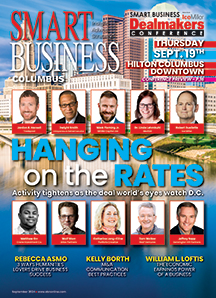
The growing popularity of IP networks within companies prompted Charlie Vogt to take advantage of the need for specialized innovation in the market.
The president and CEO of Genband Inc. grew his company by turning competitors into customers and merging with smaller companies in the market. Innovatively consolidating communication, Vogt has led Genband Inc. to be a global leader of IP infrastructure and service solutions.
“One of the best ways for us to continue to grow is to try to find greater ways to consolidate (the VOIP) space,” Vogt said. “Likewise, in our space, as more and more of our industry transitions from a TDM legacy network to an all IP network, there is a lot of new innovative technology that we have found to be very attractive to us.”
Smart Business sat down with Vogt to talk about how to best go to market in this arena.
What’s your go-to market strategy?
Three years ago we saw ourselves as a small emerging company in the VOIP space. (When we) looked in the mirror and saw ourselves competing with companies like Alcatel, Ericson, Nokia, Siemens and others, we saw that we had better technology — at least in our view. We felt there was a way we could help those companies be more successful in branding their end-to-end solution, and we took this landscape we were competing with and challenged ourselves with the opportunity to find a way to partner with what was our competitors.
We’ve fostered some fantastic relationships that have enabled these companies to be a lot more competitive. When we look at our technology, it’s a subset of a broader, condensed solution, so we don’t find our business partners … to be competitive. They view us to be an additive in the overall, end-to-end solution that has made them more cost effective and more feature-rich competitive.
How do you develop above and beyond relationships down the supply chain?
You typically get an opportunity because you have a better widget, you have better service, but long-lasting relationships are based on your ability to establish trust. We look at the relationships and partnerships that we have with the OEMs, they’re not just bolting two technologies on and ultimately reselling our products. We’re actually aligning our roadmaps, such that the technologies we’re developing are lining up to where the end-to-end solution is fully integrated, fully managed and fully supported.
What’s your tact, personally, as a chief executive spent going out and meeting with those customers, fostering those relationships and asking questions?
I believe that the only true way a management team can proceed is to not spend a lot of time with the end user. In our case, I spend a lot of time with the large customers around the world. I also spend a lot of time with our partners so that we can make sure we’re aligning the combined technologies and solutions to not only be competitive against what would be our competitive landscape, but also to ensure that we’re two or three years ahead of where the market is.
Where do you seek out new ideas, internally within your organization and externally with those clients?
We spend a lot of time in front of the customers: the office of the CTO, our PLM and engineering team, our management team and me, and we foster a lot of those ideas ourselves. We are constantly looking at ways in which we can solve problems that we foresee. … The companies who ultimately (have) a lot of success are looking at problems that are going to occur in the network two to three years from now, and how they’re going to help those customers solve those today.
How to reach: Genband, www.genband.com

